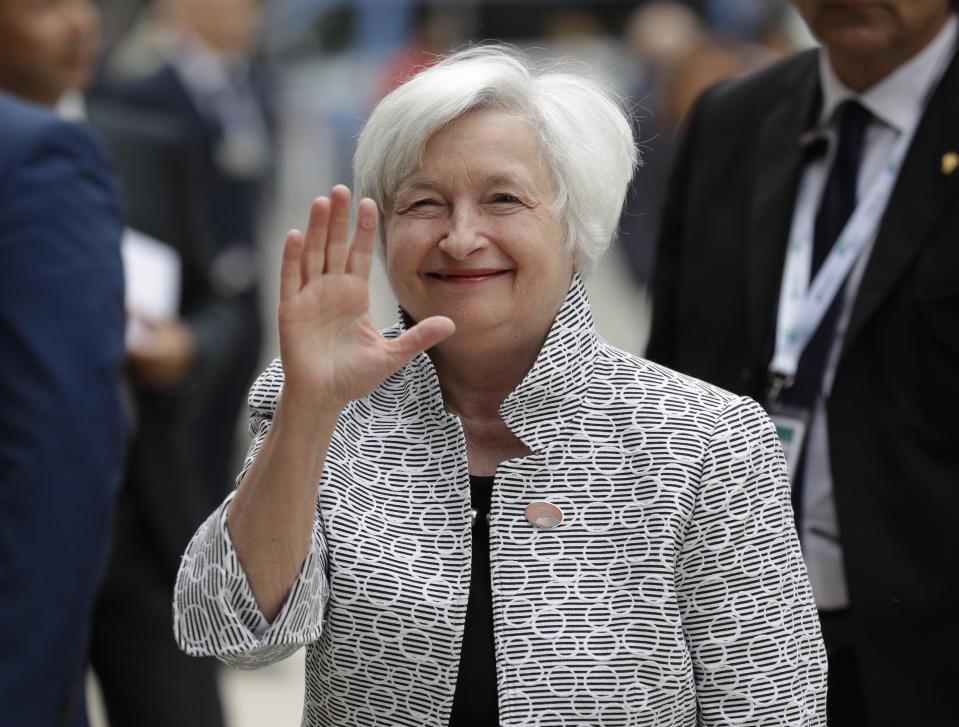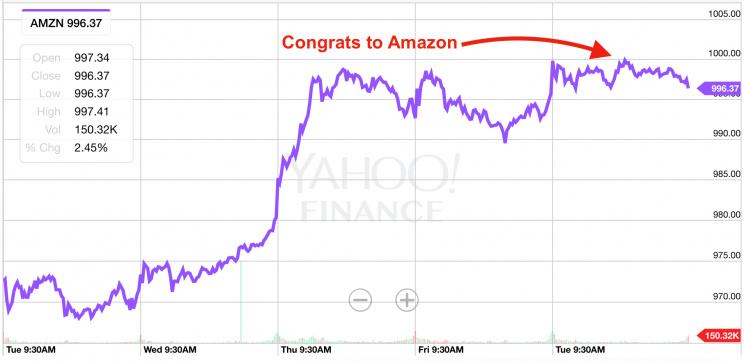Housing, Beige Book — What you need to know in markets on Wednesday
After a fairly uneventful start to the holiday-shortened trading week, Wednesday will bring investors the day’s lightest schedule.
In the morning we’ll get pending home sales for April, and at 2:00 p.m. ET the Federal Reserve’s latest Beige Book report will be released.
The Beige Book, a collection of economic anecdotes from business contacts in each of the Fed’s 12 districts, forms the basis for the discussion of the economy conducted by Fed officials at their next meeting, set to kick off in two weeks’ time.
Later this week, the a deluge of jobs data, as well as highly-anticipated numbers on auto sales in May, are set for release.

All tech all the time
On Tuesday, shares of Amazon (AMZN) briefly cracked $1,000 per share for the first time.
Eventually, shares of the e-commerce giant finished basically unchanged at $996.70, $0.92 above where they were to start the day. Breaking this milestone for the stock, which is perhaps the most-discussed security in the stock market, was a bit like the Dow 20,000 drama we all underwent in late 2016.
As a representation of Amazon’s valuation, trading north of $1,000 is not in an of itself significant. However, as a psychological barrier it matters, and in the options market there is likely to be more at stake on either side of a big round number.

But data out of Bank of America Merrill Lynch on Tuesday captured what we’re really talking about when we obsess over the price of a single Amazon share, and that is the utter domination of big tech stocks — and more specifically, the FANG stocks — as the biggest holdings among fund managers.
Year-to-date, the group of Facebook (FB), Amazon, Netflix (NFLX), and Google (GOOGL) has returned almost 30% against 8% for the S&P 500. According to Bank of America Merrill Lynch, fund managers are now 32% overweight IT and internet & catalog retail stocks, driven by a 71% overweight to FANG stocks relative to their benchmark.
This means that nearly three-quarters of active managers are overweight these high-flyers.

The argument many will make for caution at this point in the cycle, then, is clear. With so much concentration in just a few names — and so much good performance coming from these names — the market writ large is vulnerable to a drop if there’s a negative change in the price of just a few stocks. This is fairly intuitive argument.
But as Ben Carlson of Ritholtz Wealth Management wrote over at Bloomberg View last week, broader measures of market breadth — or, roughly, how many stocks are falling versus how many are rising — shows a more sanguine picture of a solid market.
Research has also shown that only a small fraction of stocks listed in the market are, over time, responsible for the market’s gain. In other words, the market is always beholden to some version of the FANG stocks and in the end, most stocks are duds.
Of course, participating in markets is often an exercise in being endlessly anxious and worried about what could go wrong. But think about what stocks have “overcome” in the last several years: a debt ceiling showdown, multiple episodes of concern over the Chinese economy, Brexit, and Trump’s election win among other news events.
Being overly certain that stocks not only stand on firm footing but will go higher is, eventually, a recipe to appear foolish and lose money. Alternatively, being convinced that a few high flying stocks simply cannot continue to be as much is to make the same mistake, just from the opposite direction.
—
Myles Udland is a writer at Yahoo Finance. Follow him on Twitter @MylesUdland
Read more from Myles here:


